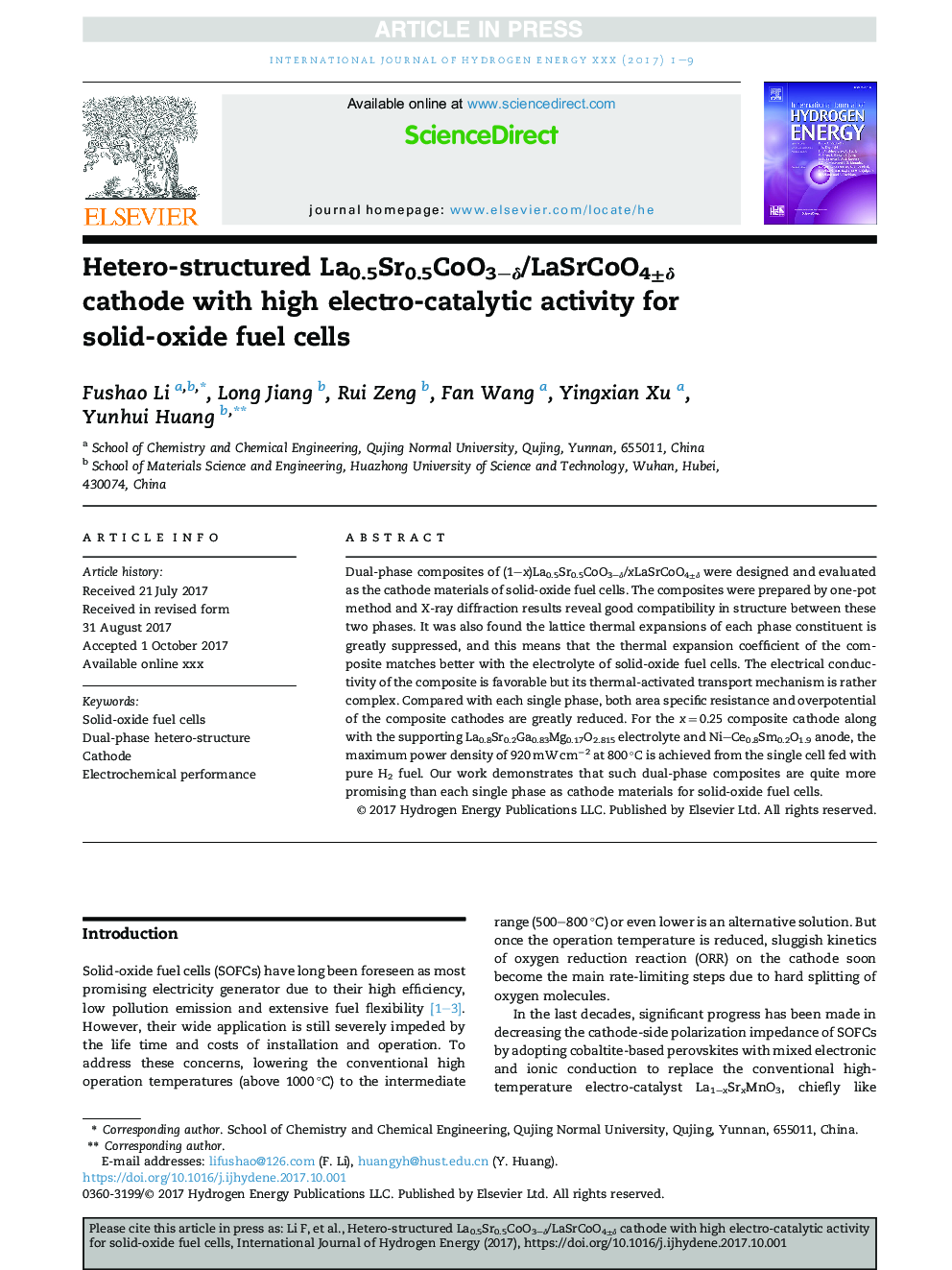| Article ID | Journal | Published Year | Pages | File Type |
|---|---|---|---|---|
| 7709245 | International Journal of Hydrogen Energy | 2017 | 9 Pages |
Abstract
Dual-phase composites of (1-x)La0.5Sr0.5CoO3-δ/xLaSrCoO4±δ were designed and evaluated as the cathode materials of solid-oxide fuel cells. The composites were prepared by one-pot method and X-ray diffraction results reveal good compatibility in structure between these two phases. It was also found the lattice thermal expansions of each phase constituent is greatly suppressed, and this means that the thermal expansion coefficient of the composite matches better with the electrolyte of solid-oxide fuel cells. The electrical conductivity of the composite is favorable but its thermal-activated transport mechanism is rather complex. Compared with each single phase, both area specific resistance and overpotential of the composite cathodes are greatly reduced. For the xâ¯=â¯0.25 composite cathode along with the supporting La0.8Sr0.2Ga0.83Mg0.17O2.815 electrolyte and NiCe0.8Sm0.2O1.9 anode, the maximum power density of 920â¯mWâ¯cmâ2 at 800â¯Â°C is achieved from the single cell fed with pure H2 fuel. Our work demonstrates that such dual-phase composites are quite more promising than each single phase as cathode materials for solid-oxide fuel cells.
Related Topics
Physical Sciences and Engineering
Chemistry
Electrochemistry
Authors
Fushao Li, Long Jiang, Rui Zeng, Fan Wang, Yingxian Xu, Yunhui Huang,
